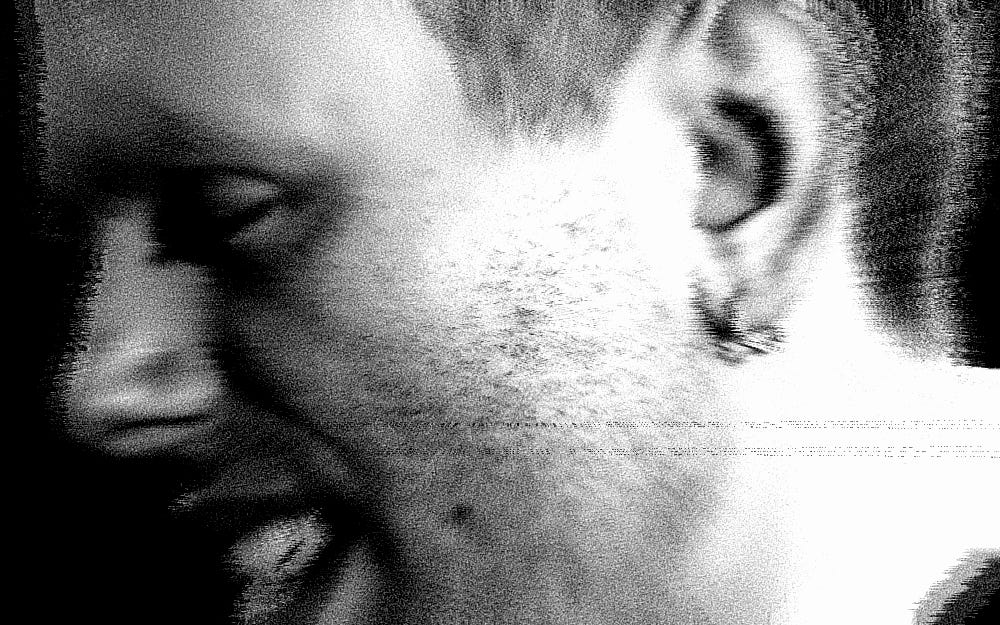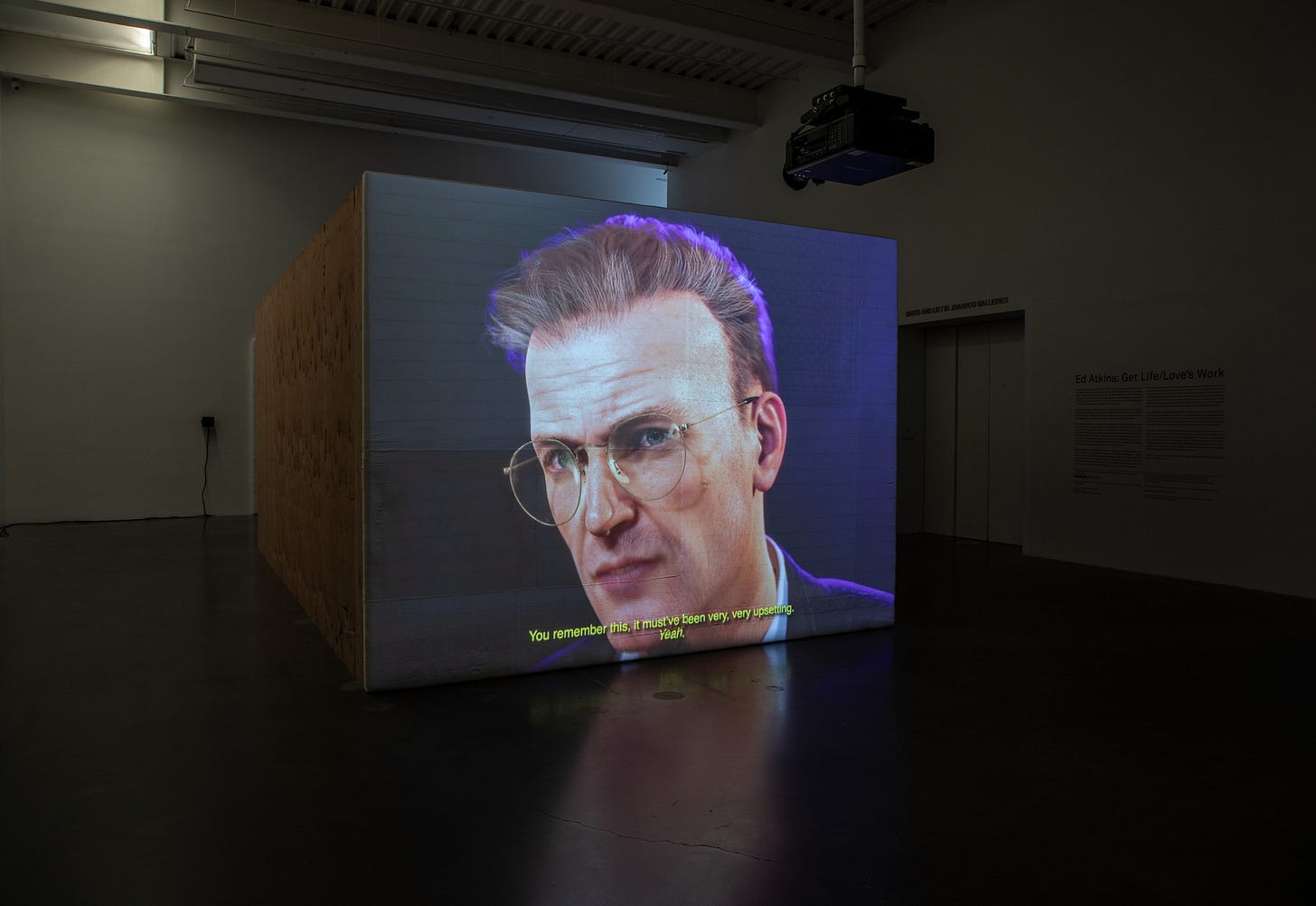𝑨𝑵𝑵𝑰𝑯𝑰𝑳𝑨𝑻𝑰𝑶𝑵
Ed Atkins and the realness of fake
I used to be a lot more cavalier about the loves I’ve lost.
TO FEEL LOVE’S PARADOX, ITS PAIN, ITS IMPOSSIBILITY — AND YET LOVE ANYWAY
TO DO ANYTHING LESS WOULD BE – TRULY – TO HAVE A BROKEN HEART
I have that tattooed somewhere, on one of my organs ~ deep beneath the skin.
And I’d apply that philosophy to my griefs, when they came up… to my losses, my abandoned projects, to my feelings about you.
But still, the pain persists.
I saw Ed Atkins’ retrospective at Tate Britain recently, felt his pain too. It surprised me.
I’ve been onto Atkins ever since my hypertext conversation with Wolfgang Saker, where videogame meets installation, where characters become proxies for spirit.
I was delighted to finally see Hisser in the flesh (screen), the tragic recreation of a man consumed by a sinkhole. There’s tedium and inevitability to his last half-hour, a weird assemblage of CGI models finding new depths of feeling.
These digital readymades are inherently exaggerated, repurposed from 3D games. Yet somehow, he captures something true… the plaintive cries of a baby, a medieval archer sobbing in pain ~ synthetic feelings with real tears. Something about the fakeness makes these portraits more quietly devastating.
I wanted to discover the human in the most inhuman places, he says.
In The Worm (2021), Atkins records a conversation with his dying mother, his own presence a pastiche of David Frost in full 1970s TV interview regalia.
In Pianowork 2 (2023), he is filmed up close and in real-time, a fully motion-captured digital replica of himself. He plays Jürg Frey’s Klavierstück 2, a notoriously sparse and mechanical piece, the same chord played 468 times, each with tortuous micro-adjustments to pace. Atkins, desperate for a perfect playthrough, appears visibly pained.
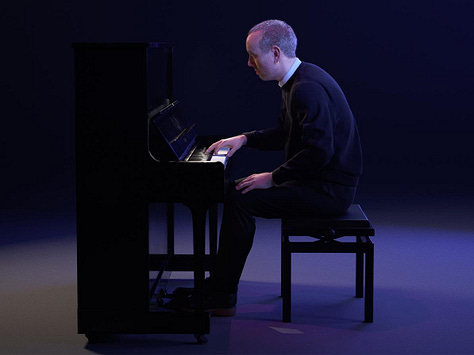
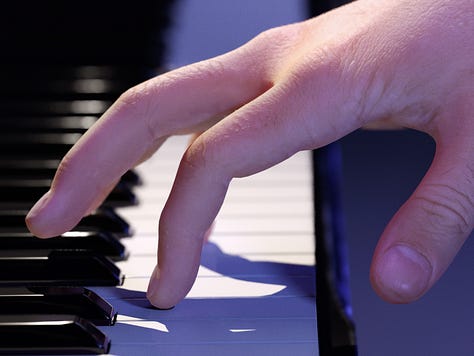
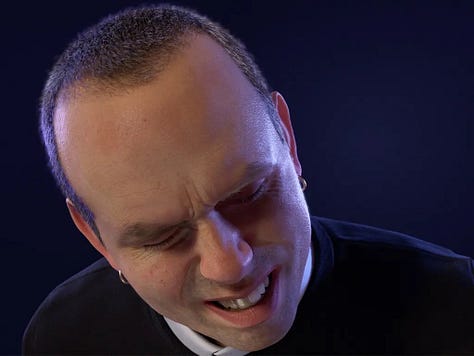
The pretend is real.
Rendering himself as a character rings true to how I have crept around my own emotions, stylising myself, become fictional; poise as self-suppression. It has always been easier for me to tell stories about my pain, place it in a grander narrative than feel the heavy truth within my body — anything but that. Better to think of myself as a character, an avatar, a protagonist tortured for a grander narrative.
But what does it look like without all that story?
To truly feel that pain - to allow yourself to - you might realise as I did the way sadness has a certain sweetness to it.
There are video loops in Atkins’ work of characters being continually pummelled and punished, of cascading junk in empty space, of endless torrential rain. The death of his father-in-law to cancer, documented through diary and film work, slowly losing his grip… The post-it note drawings that Atkins makes for his young daughter, that are really for him because she ignores them. These are the repetitions in life that kill us, bit by bit.
What is beneath all this loss?
Atkins shows himself broken in a million ways, and comes back for a million more. Transmuting pain into art is the creator’s alchemy… over time, the figures have become more similar to him, the stories more personal.
The brutalist purification has made him more himself.
The truth is, I now realise that chasing the pain of love is in its own way not just cavalier, but quite desirable.
At the right moments, annihilation is beautiful.
It is only in annihilation that you finally meet the parts of yourself that can never be destroyed.
.
.
.


